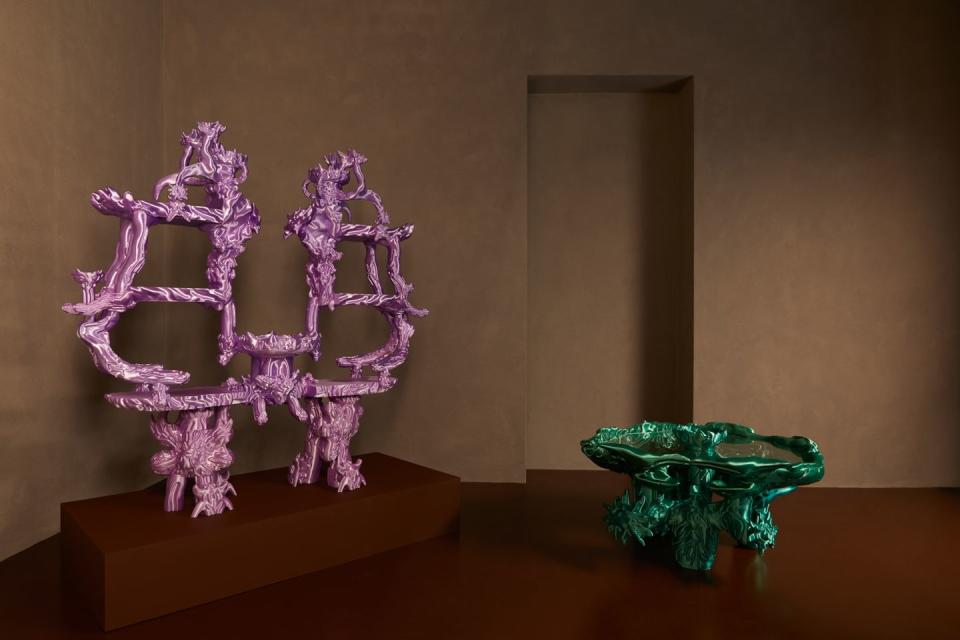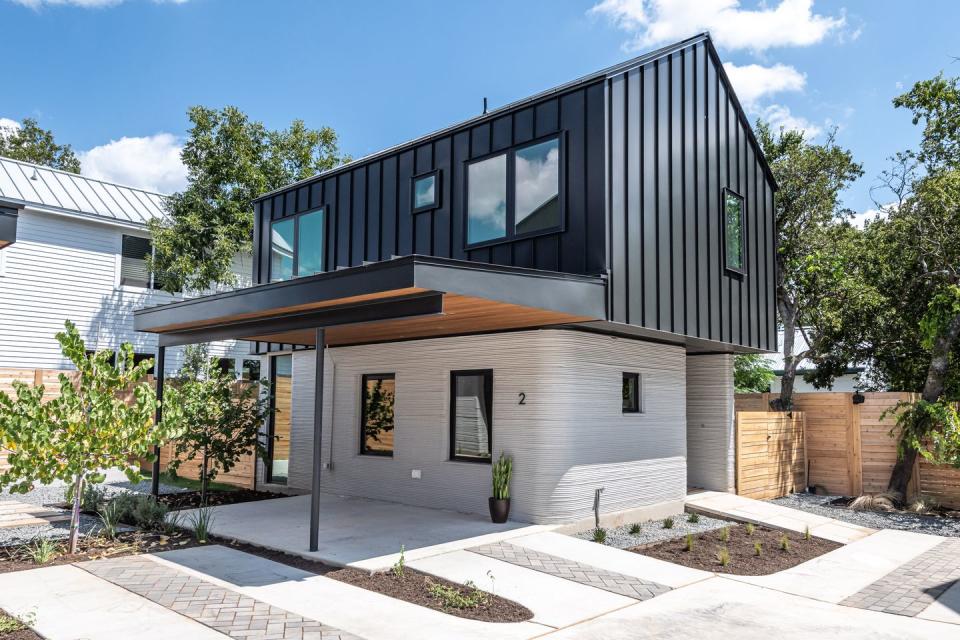What Is 3D Printing? Here's How It's Affecting the Design World

The term "3D printing" has been floating around the design community for quite some time now. The concept feels like something pulled straight from a science fiction novel for some while other curious individuals have already welcomed the small-scaled furnishings popping up. The truth is, 3D printing has leveled up into a tool that is very much of the present, not the future. Countless architects and designers have adopted the new-wave technology to create artworks, buildings, and home furnishings unlike anything we've seen before. It's only a matter of time before one of these pieces makes its way into your home (if one hasn't already).
What Is 3D Printing?
3D printing is the act of building tangible objects from digital models. This is known as an additive process where an item is created by printing successive layers of material until the original vision is achieved. When 3D printing was first introduced in the 1980s, most printers could only build small items made of plastic. The technology has since evolved to print a number of materials from metals to resins and serves countless industries such as automotive, medical, and even interior design.
The most beneficial aspects of 3D printing, specifically within the design realm, is its agility and flexibility. Building projects that may have taken a year to complete using traditional methods can be executed in nearly half the time. Meanwhile, any design edits requested by clients can easily be remedied before the final product is ultimately printed. Both factors make 3D printing a sustainable production model as it uses only the necessary amount of material and time to produce the end-product.

3D Printing in Product Design
In recent years, the design industry has seen more and more 3D-printed artworks and home decor pieces making their way to market. Utilizing this technology makes it easier for designers to tweak designs and produce more complex geometries and shapes with the click of a button. One of the leaders in the 3D-printing revolution, Audrey Large, believes the cutting-edge technology was instrumental in finding her distinctive artistic style. The French designer explores the relationship between the virtual and physical worlds through her eccentric sculptures.
"Having the machine and understanding the process opened up a wide range of possibilities: it allowed me to experiment, to print incorrect files, and to fail," says Large. "I was able to start freely going back and forth between the computer and the 3D printer which allowed me to get feedback in both directions. Thus, it allowed me to go further in developing a personal visual language through an iterative practice that mixes images and objects."
For anyone that may question whether these pieces can be considered handmade, Large is quick to point that while they may be printed from a machine, the striking figures and designs are all drawn by hand and envisioned by her. The process typically starts like any traditional process with a rough sketch of the product in mind. Though instead of pen and paper, the sketch is drawn into a 3D modeling software that allows Large to manipulate the different curves and patterns until her desired shape is achieved. The designer explains that she often references works of the past to inform her futuristic and thought-provoking pieces. "What I am trying to do is to challenge the viewer's perception of what is material, what is real."
Polylactic acid (PLA) serves as the main material for Large's sculptures because it seamlessly translates her digital designs into the material realm without having to worry about post-processing. Large encourages other creatives to look at ways they can use 3D printing as a tool in their work, but warns against using it as a replacement for traditional practices and techniques.
"I find it disappointing when we use 3D printing to replace existing techniques instead of thinking about the tool itself and finding out what its possible qualities are," says Large. "I like to push further the digital fabrication techniques in order to bring impossible fantasy objects into our daily environment."

3D Printing in Architecture
Architects and contractors have found themselves turning to 3D printing technology to build more forward-thinking structures. Launched in 2017, ICON is one of the first construction companies in the U.S. to rely on 3D printing to build homes. The team developed a mobile gantry-style 3D printer, known as the Vulcan, that can build homes on-site once the construction plans are finalized. Melodie Yashar, director of building design and building derformance at ICON, explains that "through automated construction, we are able to create high-performance houses at a better value, faster and more affordably."
The company also developed its own proprietary cementitious material known as “Lavacrete” which operates similarly to cement or mortar. This material is fire-resistant and enables the construction of durable structures able to withstand high winds and intense hurricane conditions. Lavacrete's high thermal mass also helps increase energy efficiency for the homes and reduces utility bill costs. Yashar says that the software and materials used by their teams make it possible for architects to create revolutionary designs much easier.
"Part of what is so exciting about the design-build landscape today is that new building systems, materials, and construction processes always introduce new opportunities for designers and architects to work and build in different ways," says Yashar.
ICON has seen success from their latest home project with developer 3Strands hitting the market just this year, becoming the nation's first development of 3D-printed homes in Austin, Texas. The company also announced it will be partnering with homebuilding company Lennar and Danish architecture firm Bjarke Ingels Group to create the world's largest community of 3D-printed homes.
ICON also sees 3D printing as a way to battle homelessness and aid disaster relief due to speed and affordability. Currently, the team is working on numerous projects with the goal of delivering social housing, disaster relief housing, and market-rate housing in new and revolutionary ways.
"3D printing enables the realization of new computational and generative design possibilities that were previously too difficult to manufacture using traditional construction means and methods," says Yashar.
You Might Also Like

